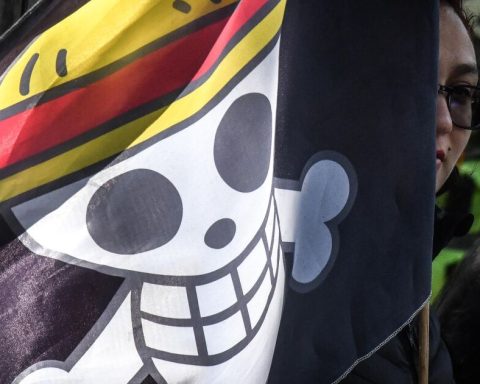There are no other data: the Mexican economy is still below the level it had before the pandemic. Going into September 2022 it’s about 2.1% smaller than it was in February 2020. We had an 8.5% drop in the first year of the pandemic. 2021 was a year of significant recovery, 5.0%, but not enough to return to the pre-pandemic level. The data for 2022 register an advance of 1.9 percent until the end of the first semester. By the end of the year, the rate is likely to moderate to closer to 1.5 percent.
2.1% equals $19.8 billion. That is the size of the GDP of a state like Sinaloa, national leader in the production of corn, tomato, shrimp, tuna, cucumber and chickpea. Of these dimensions is the gap that we still need to fill to be at the same level as at the beginning of 2020.
Why does this matter? President López Obrador puts the issue in his fourth report. The economy fell, but we are back to pre-pandemic levels, he said. This is a case for Mrs. García Vilchis. The data is beyond any doubt. They are available to everyone. Statistics is the product of the work of a large public institution, INEGI, directed by a respectable official appointed by AMLO, Graciela Márquez.
The problem is not presidential optimism, but the lack of objectivity and the conclusions that derive from this in public policies. If everything is going as well as the president says, why change things? López Obrador announces his intention to maintain the economic strategy in the last third of his six-year term because he is convinced that it is working. There is nothing to correct because the lack of results is due to external circumstances: the pandemic and the Russian invasion of Ukraine. No word in the IV report about what happened in 2019 when the economy fell 0.2 percent. We are facing a story full of triumphalism, despite the fact that we have the worst performance of the economy since the six-year term of Miguel de la Madrid, when the GDP grew at an average rate of 0.58% per year. We are below that “record”. To “match” the mark, the Mexican economy must grow about 2% per year between 2022 and 2024.
Is it possible to grow 2% or more in the short term? The international context does not help. It is taken for granted that there will be a recession in Europe and also in the United States. China will have its lowest growth in four decades. More serious than low or no growth is high inflation. To combat it, we will have a minimum of two years with interest rates at relatively high levels.
I said that the international context does not help, but this statement requires nuances: the growing tension between the United States and China offers enormous opportunities for the Mexican economy. The nearshoring or relocation of factories and processes that are now in China has become imperative for many corporations that aspire to be or grow in the North American market. There are many countries that want to take advantage of the decoupling of the US with China, but Mexico and Canada have some obvious advantages: the T-MEC plus the geographical position… location, location, location. The advantages are relevant, but they do not guarantee anything: in a context of geopolitical redefinitions, nearshoring is becoming friendshoring, how friends do we want to be with the United States? Faced with the global challenge of the energy transition, are we ready to prepare the end of our idyll with fossil fuels?
What will the end of the six-year term be like? The priority of the President is to win the elections and ensure the continuity of his project. It is not clear the place that economics occupies in AMLO’s mental map, nor do we know if he has already finished stripping the daisy: I am not referring to the game of bottle caps, but rather the economic closure of his presidential term. How will pitcher López Obrador do to get the last six outs. Opposite, there are sluggers who can take the ball out of the park and the pitcher’s arm may not bring the freshness to make pitches with enough speed and curve. I said maybe.
International investors are watching what Mexico does with the T-MEC, particularly with the dispute over the energy sector. In an ideal scenario, this dispute is resolved and more investment arrives in Mexico. In the worst scenario, cracks and uncertainty open around the T-MEC and we have to experience capital outflows, in addition to a reduction in trade and investment. That is not the only issue. We will have more pressure on public finances, the Secretary of the Treasury, Rogelio Ramírez de la O, acknowledged in an interview with Bloomberg: they are the high costs of the emblematic works, in addition to the growth of public debt service, derived among other things of increases in interest rates. In 2021 it was 733,000 million pesos and in 2022, we could exceed one billion pesos. This increase takes away the government’s room for maneuver, especially if a tax reform is not proposed or there are no budget restrictions on the president’s pet projects.
There are more topics than space in this column, but a question remains in the air, at the end of the six-year term, economically, will the pragmatic AMLO or the ideological AMLO predominate?














